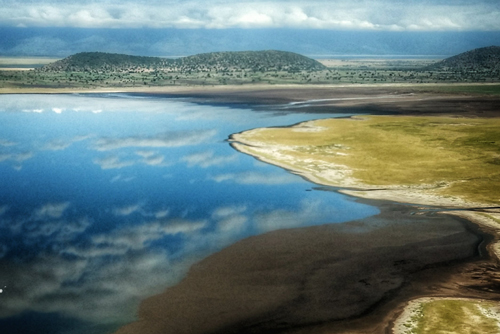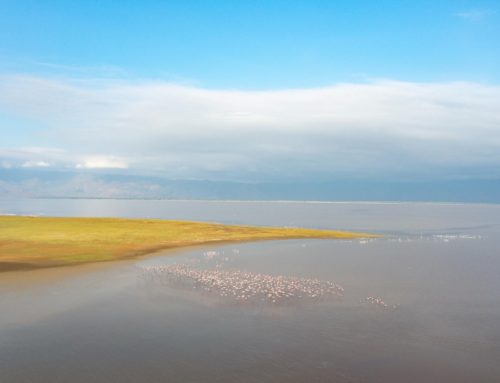Improving local community livelihoods and habitat through equitable governance and effective management of Burunge Wildlife Management Area
Project Background
Burunge Wildlife Management Area (BWMA) is a community-owned and managed protected area in Babati District, Northern Tanzania. Spanning 28,300 hectares, it is situated near Tarangire National Park and Lake Manyara National Park, serving as a crucial migratory corridor for wildlife. The region boasts abundant biodiversity, including the second largest population of migratory ungulates in East Africa and the largest population of elephants in Northern Tanzania.
The main source of revenue for BWMA is photographic tourism, with 30% of the proceeds being equally distributed among the ten member villages that house approximately 35,000 residents. Notably, BWMA distinguishes itself from other Wildlife Management Areas (WMAs) in the area due to its ethnically diverse population. While it used to thrive as a tourism destination, the COVID-19 pandemic has severely impacted its income. The area experiences conflicts among various stakeholders, such as investors, communities, and government bodies, concerning issues like livestock grazing, rangeland management, tourism development, and sustainable resource utilization. To tackle these challenges, BWMA has established professional management and an active governing body. Honeyguide, an organization, has been actively involved in providing governance and management training to enhance the effectiveness and sustainability of BWMA. Despite its previous success in tourism, BWMA struggles to become a self-sufficient and sustainable conservation model without efficient and equitable management and governance practices.
To achieve this, Honeyguide conducted a governance assessment in 2021 and identified the necessity for transparent and effective management, participatory governance, and improved communication among stakeholders. Consequently, the project aims to develop long-term plans, establish stakeholder forums, and implement communication strategies to foster trust and transparency. Additionally, there is a focus on increasing awareness among community stakeholders regarding their rights in decision-making and resource access.
A major concern is mitigating the negative impacts of wildlife, particularly elephant-induced crop damage. The project plans to collaborate with communities to develop response mechanisms, including crop protection toolkits, training programs, and ranger support to minimize crop raids. By providing tangible benefits to households, the project aims to promote appreciation for BWMA.
Project Goal
The overall project goal is for Burunge Wildlife Management Area governing bodies to understand and perform their roles efficaciously, leading to an effectively managed WMA that protects natural resources, benefits local communities, and utilizes SAGE outputs as critical guidance to enhance management and governance of the protected area.
Project results areas and key interventions
Result 1.1: Burunge WMA is professionally managed with all necessary control systems and customized management tools and is exercising best management practices.
Change how Burunge WMA works as a team where governance and management execute their roles. Governance provides oversight of management (meeting regularly to review progress and approve plans) and regularly communicates with communities. Management is able to professionally and transparently manage their finance and activities with accurate reports shared quarterly, as agreed per policies and commitments to relative stakeholders.
Result 2.1: Information is equitably shared and communicated amongst all Burunge WMA stakeholders so that they are aware of the role of the WMA and their rights to decision-making and resources access.
All stakeholders will have an agreed common goal and direction to work towards. Stakeholders have been involved in the development of BEST that outlines clear long-term goals within the first 6-months of the project. Actions to deliver goals are clearly communicated with potential donors and investors.
Result 2.2: Burunge WMA has equitable, transparent, and participatory governance and conflict resolution mechanisms in place.
Trust and relationships between stakeholders and Burunge WMA is established due to regular communications and engagement. There are regular meetings at least every 6 months to discuss issues as well as BEST implementation progress, collaboration in tourism marketing and product development activities. Stakeholders are provided with quarterly and annual reports of the WMA activities and progress relevant to the stakeholder groups.
Communities understand the goal of the WMA, their rights within the WMA, and the benefits of the WMA and value the WMA. Hour-long film is made in year 2 and shown to all 10 villages communicating the goals of the WMA, shared benefits, challenges, and successes. Posters will be shared with the community that communicates the rights of the citizens, the land and resource use zones within the WMA, and the purpose of WMA laws and policies within year one.
Result 3.1: Burunge WMA has human wildlife conflict mitigation tools and resources to reduce the economic impact of communities living with wildlife.
The project will conduct peer-to peer human-wildlife conflict learning sessions with Randilen WMA. The to produce and distribute the crop protection toolkits that are approved by the National HWC strategy reducing pressures on small scale farmers. The project will develop village crop protection teams (VCPT) and train on elephant behavior, the use of the crop protection toolkits and monitoring the impact of the toolkit and HWC. By holding annual meetings with the VCPT leaders, village leaders and WMA management to develop human-wildlife conflict mitigation strategy.








Leave A Comment